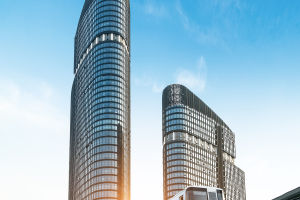Baroque architecture stands as a testament to the grandeur and opulence of an era marked by artistic innovation and cultural transformation.
Emerging in the 17th century in Europe, particularly in Italy, Baroque architecture captivated the world with its exuberant forms, intricate details, and dramatic flair.
As a diverse style that evolved over time and across different regions, Baroque architecture manifests itself in various forms, each with its own unique characteristics and contributions to the architectural landscape. Let's delve into the seven prominent types of Baroque architecture, showcasing the splendor and diversity of this captivating style.
1. Italian Baroque
Originating in Italy, Italian Baroque architecture embodies a sense of theatricality and dynamism, characterized by its elaborate ornamentation, dramatic use of light and shadow, and monumental scale. Examples of Italian Baroque architecture include the magnificent St. Peter's Basilica in Vatican City, designed by architects such as Gian Lorenzo Bernini and Carlo Maderno, and the opulent Palazzo Barberini in Rome, adorned with exquisite frescoes and sculptural embellishments.
2. Spanish Baroque
Influenced by the grandeur of the Italian Baroque, Spanish Baroque architecture flourished during the Spanish Golden Age, leaving a lasting legacy across Spain and its colonies. Notable examples include the Royal Palace of Madrid, distinguished by its imposing facades and lavish interiors, and the Cathedral of Santiago de Compostela, adorned with intricate stone carvings and ornamental motifs.
3. French Baroque
French Baroque architecture reflects the magnificence of the Sun King's reign, epitomized by the grandeur of the Palace of Versailles. Characterized by its symmetrical layouts, ornate decorations, and monumental proportions, French Baroque architecture exudes an aura of regal splendor. Other notable examples include the Palace of Luxembourg and the Saint-Sulpice of Les Invalides in Paris.
4. English Baroque
Marking a departure from the restrained classical tradition, English Baroque architecture embraced a more exuberant and expressive style. Influenced by the works of Sir Christopher Wren, English Baroque buildings are characterized by their dynamic use of curves, intricate stonework, and elaborate ornamentation. St. Paul's Cathedral in London stands as a masterpiece of English Baroque, with its majestic dome and sculptural embellishments.
5. German Baroque
German Baroque architecture, also known as "Baroque of the North," flourished during the 17th and 18th centuries, leaving a significant mark on cities such as Dresden, Munich, and Würzburg. Characterized by its richly decorated facades, elaborate stucco work, and dynamic compositions, German Baroque architecture is exemplified by landmarks such as the Zwinger Palace in Dresden and the Würzburg Residence.
6. Central European Baroque
Central European Baroque architecture encompasses the vibrant architectural traditions of countries such as Austria, Hungary, and the Czech Republic. Influenced by Italian and German Baroque styles, Central European Baroque is characterized by its lavish interiors, intricate ornamentation, and harmonious fusion of architectural elements. Examples include the Belvedere Palace in Vienna and the Matthias Saint-Sulpice in Budapest.
7. Austrian Baroque
Designed in 1716 by Austrian architect Johann Bernhard Fischer von Erlach and built for the first Prince Trautzen, Trautzen Palace is one of the many lavish Baroque palaces in Vienna, Austria. Trautzen Palace displays many of the noble architectural features of the Renaissance, but at the same time sees ornamentation and gold highlights. The restrained baroque style enhances the Renaissance.
Baroque architecture encompasses a rich tapestry of styles, each reflecting the artistic, cultural, and historical contexts of its time and place. From the grandeur of Italian Baroque to the exotic charm of Austrian Baroque, these seven types of Baroque architecture continue to inspire awe and admiration, reminding us of the enduring legacy of this remarkable architectural movement.


